Permavoid Shallow Geocellular Water Management System
Permavoid is our award-winning water management solution, designed to provide shallow water storage for attenuation, detention or soakaway/inf

The cities of the Middle East have been experiencing unusual weather patterns. Following successive dry years, coupled with growing challenges related to water scarcity, the tides seemed to have turned in the MENA region.
In the past few months, rainfall has been particularly high. This change could be partially attributed to climate change, but it can be more certainly linked to the implementation of cloud-seeding across cities in the region.
What is cloud-seeding?
Cloud-seeding is a type of weather modification that aims to artificially encourage clouds to produce more rain.
Airplanes are used to release chemicals, typically salt, silver iodide, dry ice or potassium iodide, into the sky. These substances then encourage precipitation to form in clouds.
Explore more about how cloud-seeding works:
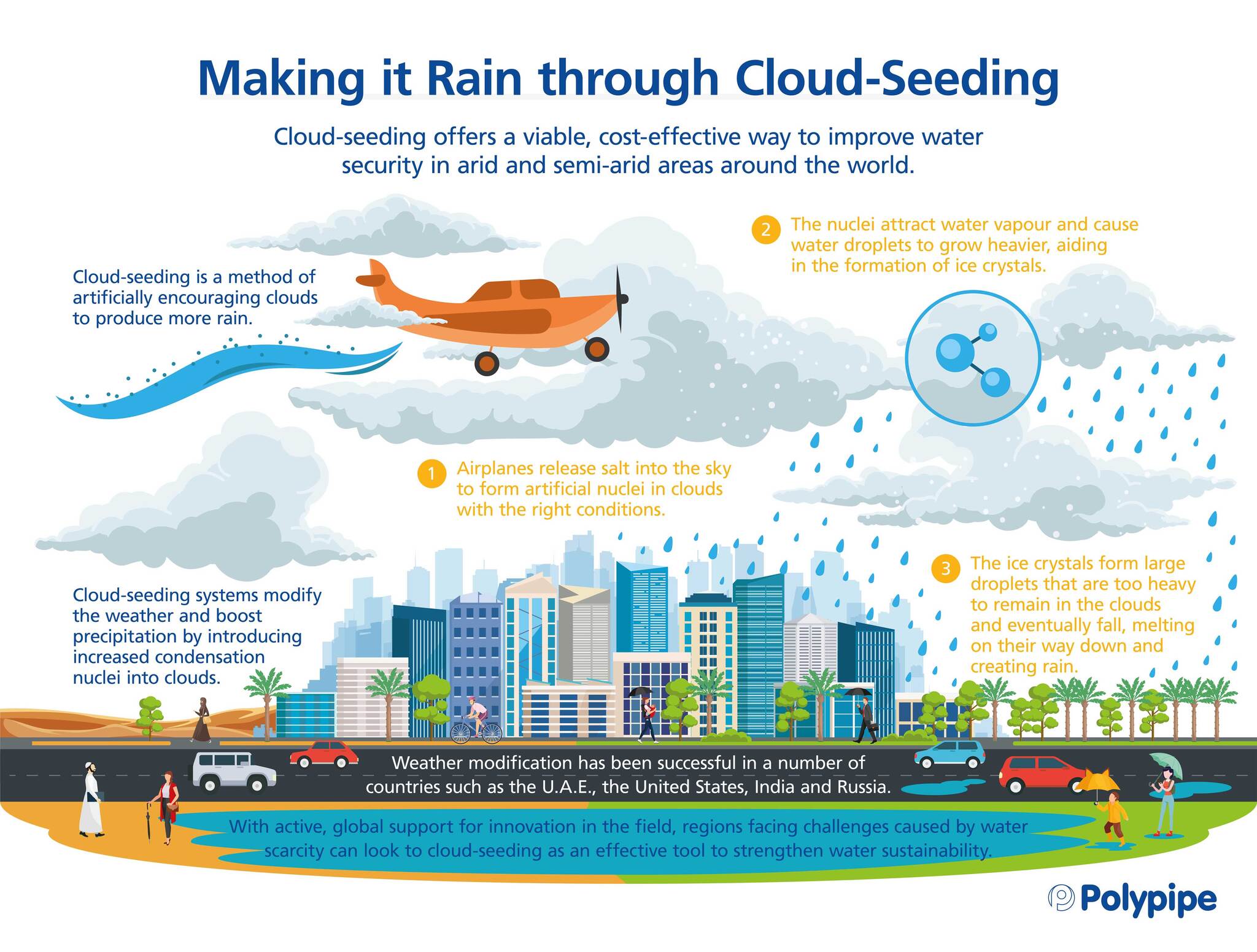
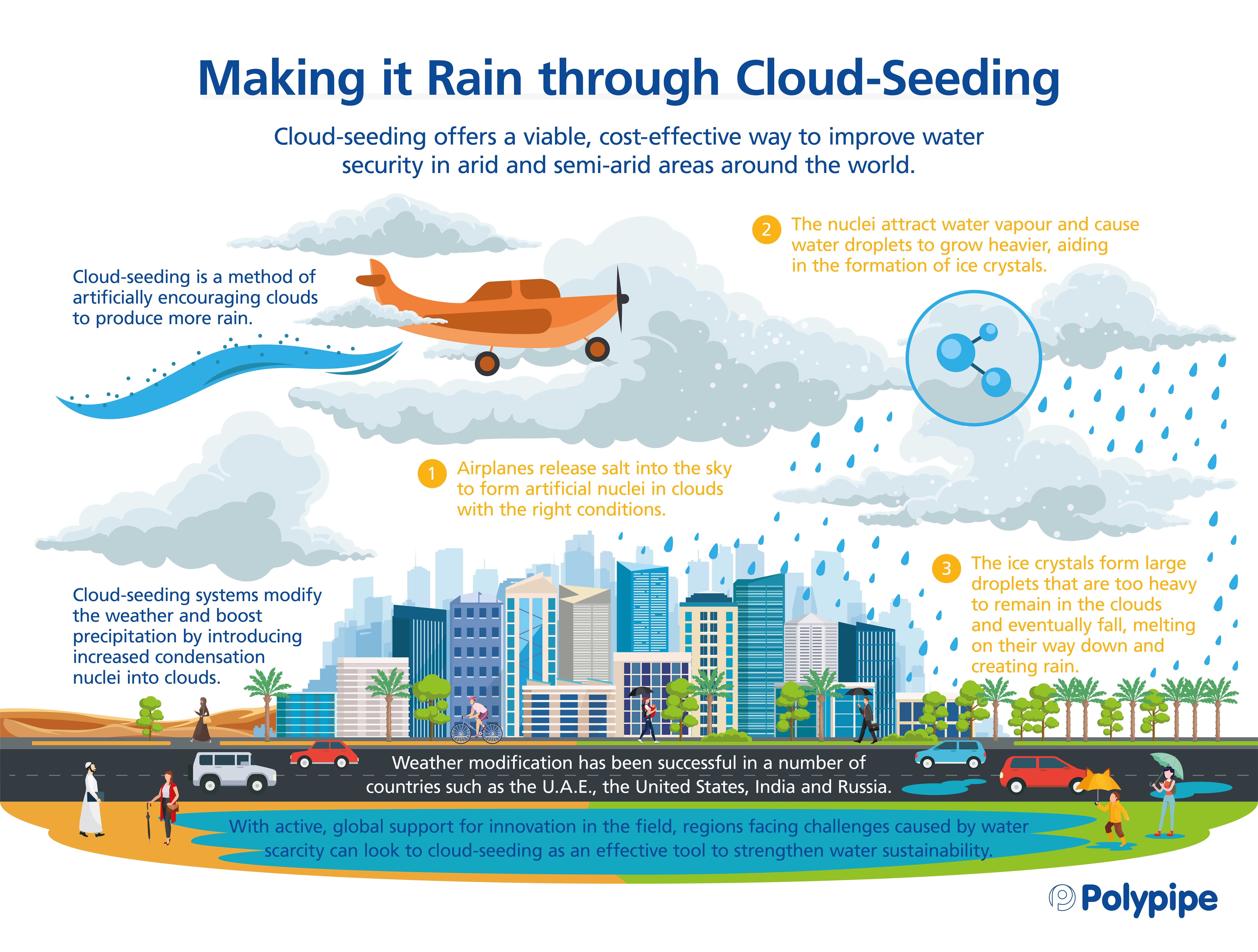
Cloud-seeding is currently being used to enhance water security for arid regions of the Middle East.
In fact, the Kingdom of Saudi Arabia has just announced its plans to implement a cloud-seeding program. After a review of global practices, the Ministry of Environment, Water and Agriculture has approved a program that aims to increase rainfall in the country by almost 20% percent.
Rapid population and industrial growth have placed increasing pressure on the country’s water resources. As one of the world’s most arid countries, with less than 100mm of rainfall a year, water security in Saudi Arabia is looking to change.
Saudi Arabia isn’t the only country in the region turning to cloud-seeding to address water scarcity. The UAE is one the world’s top ten most water-scarce countries in the world. The country is still dependent on groundwater for two-thirds of its domestic requirements and thus keeps pursuing its path to enhance water security.
Learn more about tackling water scarcity in the region:
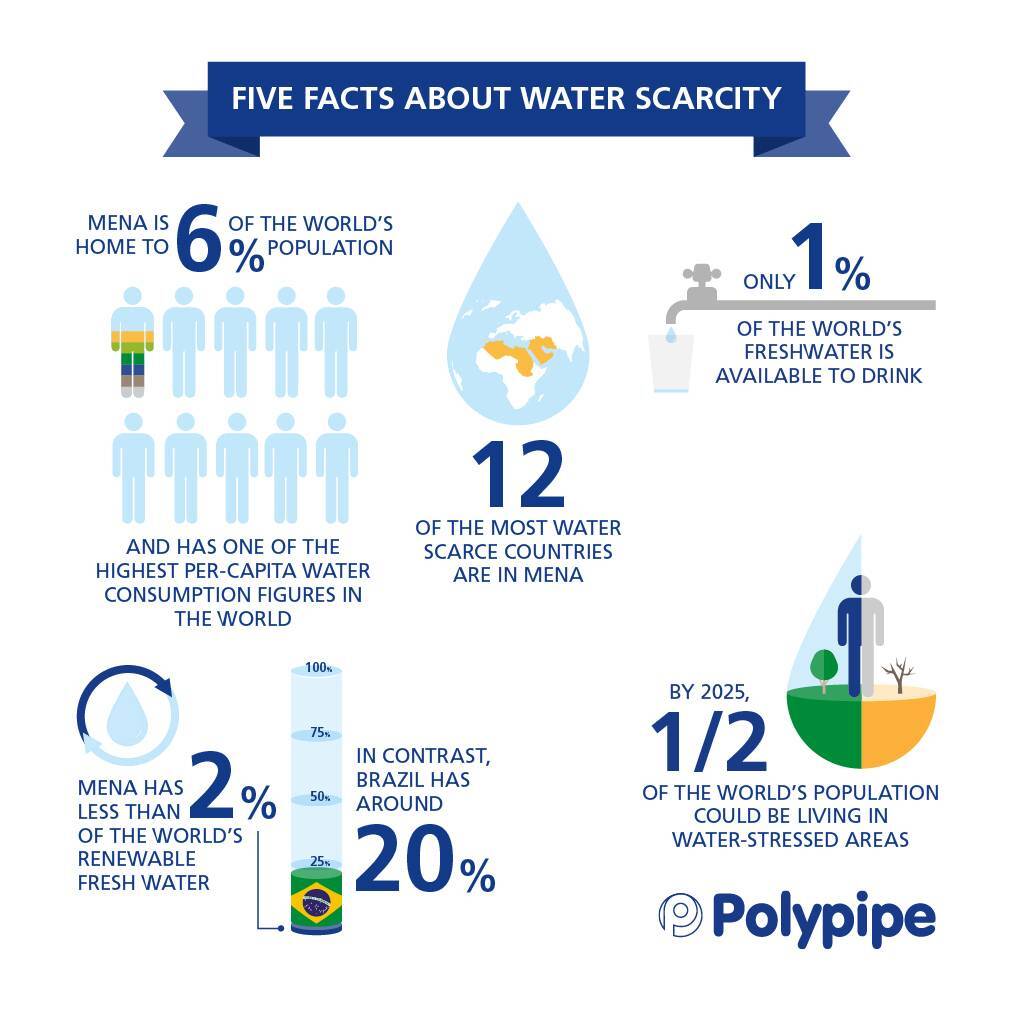
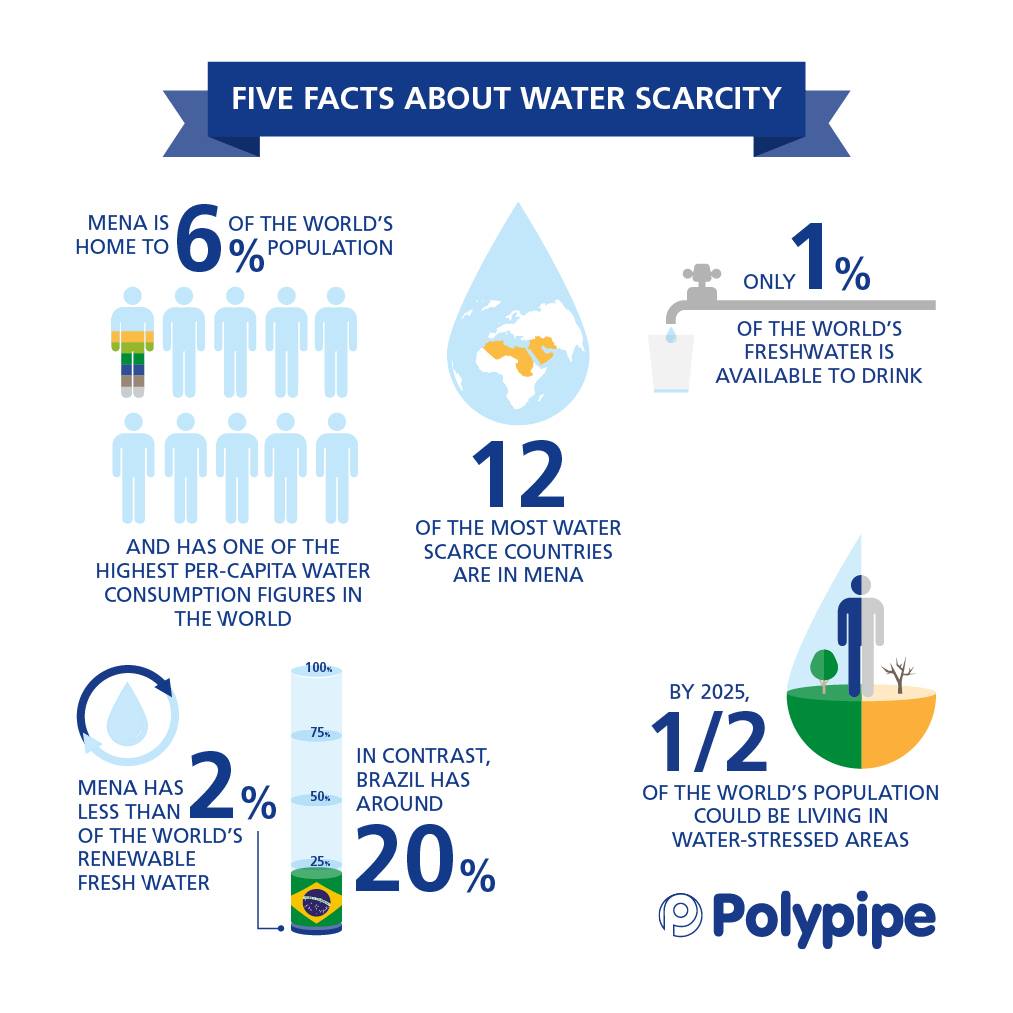
Cloud-seeding, referred in the UAE as ‘rain enhancement’, has been successfully implemented in the country. Local governments have created the UAE Research Program for Rain Enhancement Science to oversee a USD $5 million program to encourage research and innovation in the field and make a lasting contribution to the fight against water scarcity on a global scale.
Benefits of Cloud-Seeding
Cloud-seeding is a viable way to supplement water supplies in arid and semi-arid regions. The impact can be widespread, with increased water security leading to a number of knock-on benefits.
Increased rainfall can help to make drought-affected areas more suitable for living. The act of cloud-seeding enables more predictable weather patterns, ultimately leading to a lower chance of unexpected flooding.
Not to mention, cloud-seeding is cost-effective and can therefore be successfully implemented into diverse economies. For example, Idaho Power in the U.S has been using cloud-seeding to boost the volume of water moving through its hydroelectric dams since 2003. Their USD $3 million program generates billions of gallons of additional water for much less than 1% of the company’s operational budget.
Cloud-seeding can also aid economic development. More rain means a cooler climate and more livable conditions. Imagine what would happen if just 20% of the Sahara Desert could become useable land? Land that could be commercialised or used for agriculture to benefit local economies.
Furthermore, dry, arid areas previously considered inhospitable can be transformed into desirable holiday destinations, attracting more tourists and bringing in a flood of foreign currency into local economies.
Coping with Water Stress
Whilst the future of the desert may be looking greener, making this vision a reality depends on successful and sustainable water management.
With all the benefits that cloud-seeding can offer, excess rain and storm events also cause a strain on existing water networks in cities. Traditionally built on dry land for desert climates, many of these cities do not possess the necessary infrastructure to cope with increased rainfall.
Stormwater travels fast, causing high volumes of water to flow into urban areas in a short space of time. This water can overwhelm drainage systems or collect in puddles and become stagnant, creating public health issues.
Flooding is not only an inconvenience but a serious danger to human life. For property planners, architects, developers, contractors and local municipalities involved in urban development, it is essential to ensure that infrastructure is becoming better equipped for the increased rainfall. This approach not only supports evolving regulatory requirements and national visions but also a collective moral obligation to create safer, healthier communities.
Initiatives such as the UAE Water Security Strategy 2036 is an example of how cities are looking to implement more innovative solutions that encourage resilience by working with water instead of against it.
How can we prepare our cities for rain?
The key to protecting the wider community is engaging all parties involved in positive change. Once people realise both the social and commercial benefits offered by more sustainable flood mitigation strategies that serve to enhance public health, only then do we have a chance at fostering real change.
The use of sustainable urban drainage systems (SuDS) in stormwater management is crucial for creating an environment better equipped to cope with the impact of cloud-seeding.
Learn more about the benefits of SuDs:
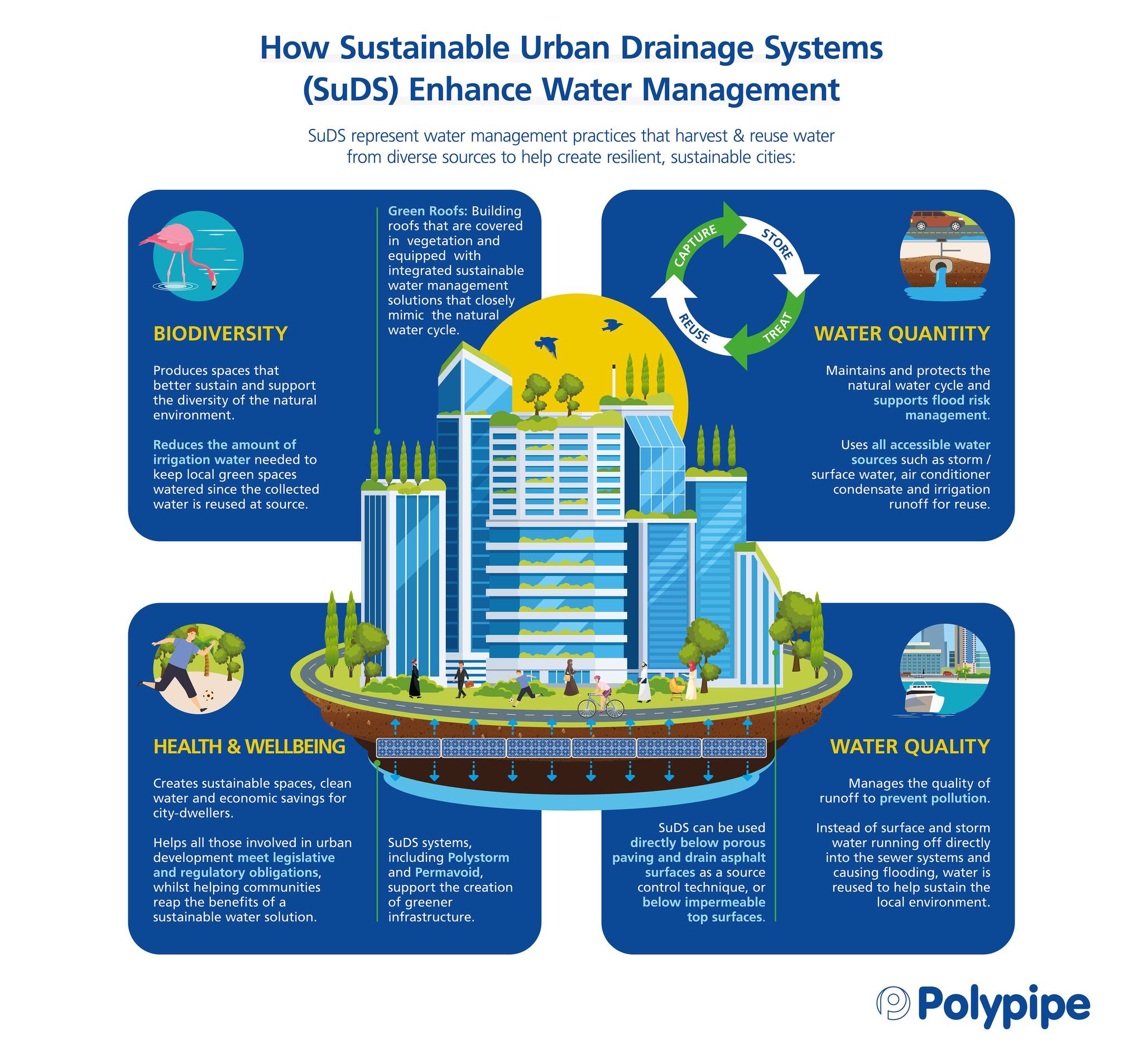
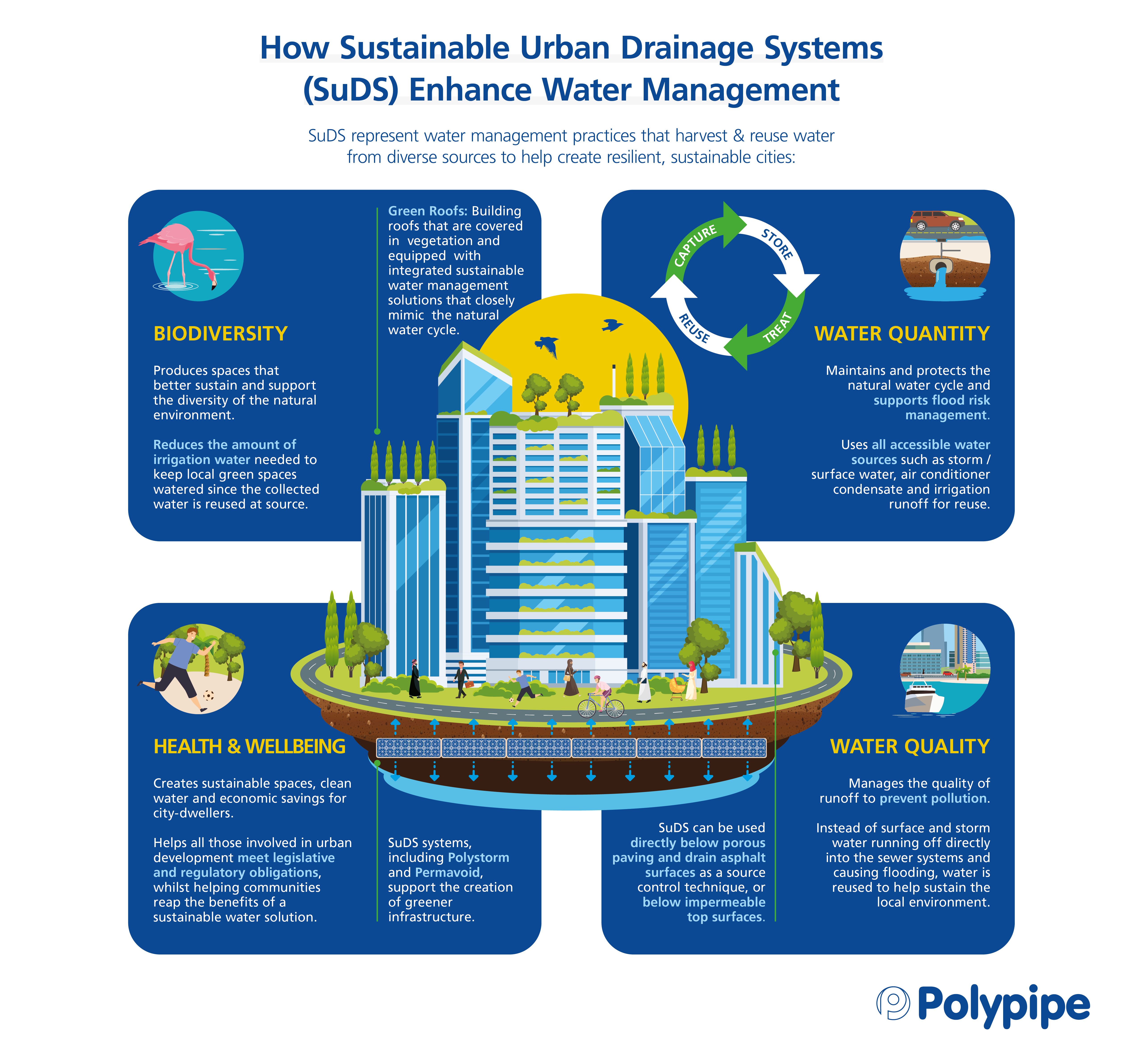
In contrast to traditional systems, SuDS is an eco-friendly method which quickly drains water directly into underground networks, mimicking the natural cyclical water management process: capture, treat, store and reuse. This self-sustaining application can harvest water from a number of sources that would otherwise go to waste such as stormwater, AC condensate and irrigation run-off.
As regional municipalities increasingly require development plans to demonstrate a more sustainable approach to water management prior to granting approval, SuDS helps to meet legislative requirements, whilst simultaneously allowing communities to reap the benefits of sustainable water solutions.
Creating Water-Resilient Cities with SuDS
The challenge is that as cities become more urbanised, we see increased areas of concrete and less greenery. Often, sufficient drainage is not implemented into civil infrastructure (e.g. roads). Since water cannot infiltrate the concrete, the roads end up collecting stagnant water and causing severe flooding.
Geocelluar systems, such as Polystorm and Permavoid, support SuDS application. Designed for use under trafficked areas, these systems can help to create void space for managing water within the urban environment to store water channeled from buildings and surface drains.
So instead of surface/storm water running directly into sewer systems as waste, potentially causing them to flood, they can be captured into these systems and diverted for sustainable reuse.
Furthermore, these systems support the creation of blue-green roofs that can not only add value to properties, but offer occupants and property owners a variety of commercial benefits.
Our geocellular systems work by capturing water and slowly allowing it to percolate into ground, instead of letting it flow freely into drains and sewers that are unable to cope in peak rainfall events. This can help to reduce flood risk by up to 80% and protect affected areas and their occupants from harm.
By using geocellular systems, green roofs manage stormwater at the source and use it to irrigate vegetation. Green roofs also offer a relaxing green space, amidst a concrete jungle with increased real estate opportunities for agriculture and commercialisation.
In essence, they offer a practical solution to drainage challenges whilst maximising the efficiency and profitability of a project.
Learn more about the impact of green roofs in arid regions.
Looking to the Future
What is important is that innovators and industry leaders come together to encourage the design and installation of sustainable solutions that support health and growth within the built environment.
For businesses operating in the construction/manufacturing industry in the Middle East today, a genuine commitment to sustainability is becoming essential.
A key aspect of supporting sustainability is to implement solutions that safely address the increased rainfall in the region. Solutions that support SuDS to not only enhance communities, but help create resilient cities.
Polypipe Middle East has successfully implemented SuDS application in projects across the UAE such as Dubai Expo 2020, DIFC and Amaranta at Villanova helping to increase energy efficiency, reduce costs, simplify installation and enhance water management.
With over 60 years of experience in the region, Polypipe Middle East is an expert in regional practices and requirements. As pioneers in the field, we remain current with the latest innovations in sustainable urban development.
Contact us today to discuss the sustainable transformation of your project:
Tel: +971 (0) 4 518 3000
Email: middleeast@polypipe.com
Permavoid is our award-winning water management solution, designed to provide shallow water storage for attenuation, detention or soakaway/inf
Polystorm is an efficient and versatile geocellular water management system for Sustainable urban Drainage Systems (SuDS) compliant attenuation, det